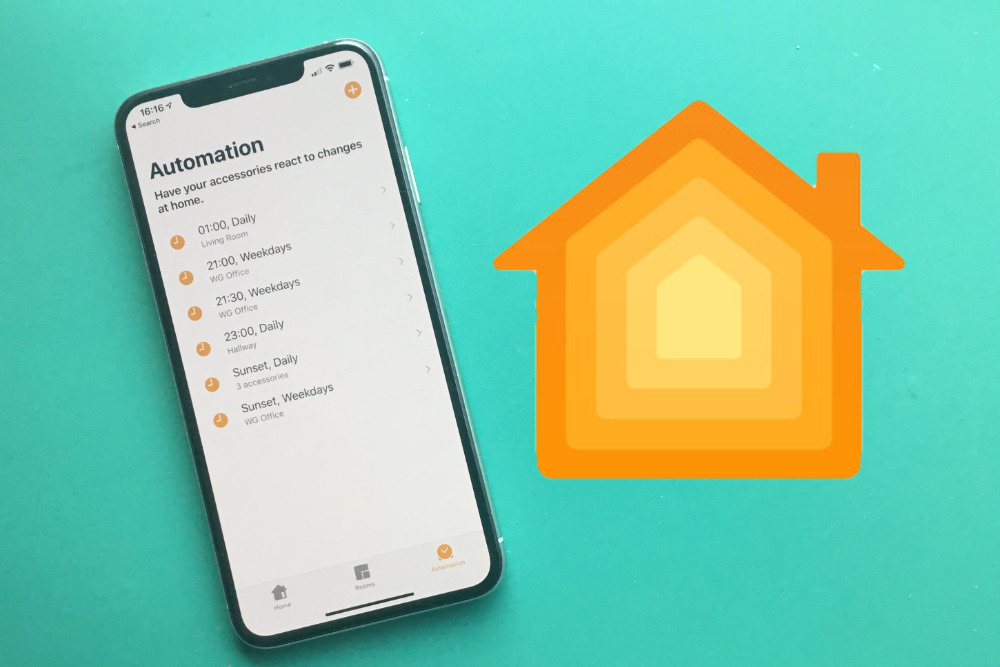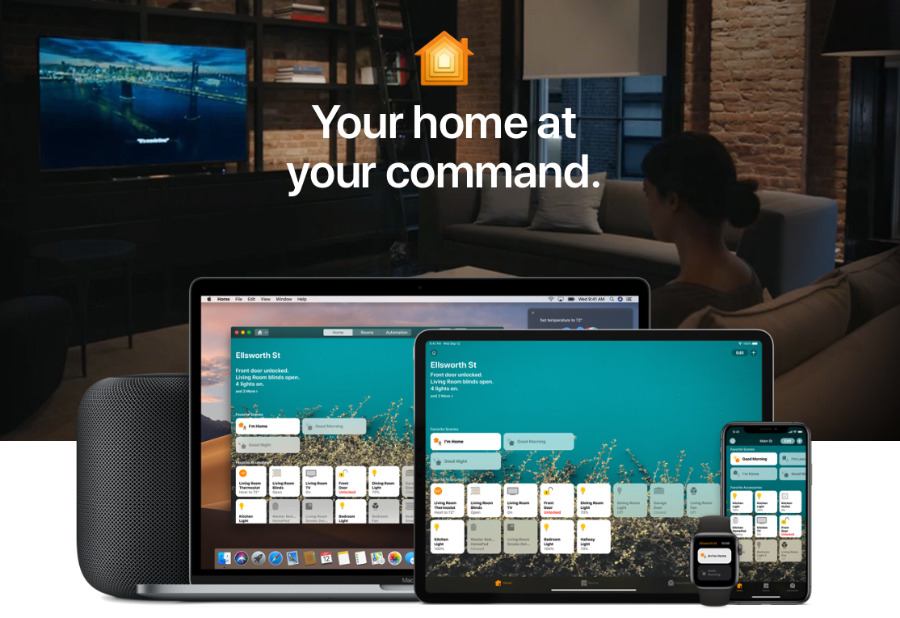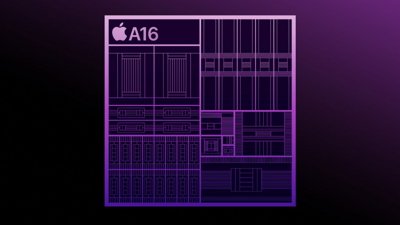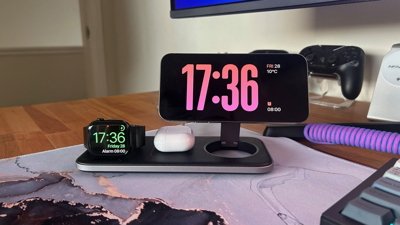Apple's HomeKit is growing, and there is now a range of smart devices for every function. Yet there are both potential savings and hidden costs that will make or break your decision on whether to invest. Plus, HomeKit is still more complicated than it should be.
Apple's HomeKit is superb — but it's not ready yet. Five years after it was released, we're still far from your being able to buy any smart device without checking it out first. And while there are moves to make the devices cheaper, we are still a long way from when your great aunt will be able to pick up a smart bulb without you crossing your fingers and hoping that it will work for her.
However, even though there aren't enough devices yet, and the complexities can be too much for some, HomeKit still is really superb. Once you've got some HomeKit devices in your house, you are likely to want more, and you're deeply unlikely to ever go back.
And, even if you still have to have some experience in iOS and Macs, even if you still have to plan your purchases with care, we are now at the point where HomeKit is possibly a practical and economic solution for your home.
That's because HomeKit is about connecting household devices together and controlling them via iOS or Siri. Those devices are ones that we all have — and they are ones that we are all likely to replace at some point.
Consequently, the next time you're going to replace a lock, a blind, a bulb or anything else, there will now be a HomeKit option and it can make much more sense to buy that than not.
The question is only partly about what they can do for you. It's much more about whether your situation even allows it
If you're renting or if your house is old, then there are other issues to consider such as permissions, cost, and even whether it's physically possible to install certain devices. You also have to think about accessibility for your family and whether they'll take to HomeKit switches or need to be regularly reminded how to use them. Cost is an issue, but largely tertiary to the above.
Decide if you can be interested
Simply, HomeKit is Apple's home automation technology, competing with several other methods by other vendors. You may also know that there aren't yet as many such devices for HomeKit as there are for Amazon's Alexa, and if you've tried buying any, you'll have found that HomeKit ones are more expensive.
HomeKit devices tend to earn their price by being robust — and significantly better from a security perspective. If you can control your devices over the internet from outside your home, so could someone else, so Apple's focus on privacy and security with HomeKit is important.
What you may not know yet, is just why you would bother with any of this when you don't have to. The reason is that there are cost savings when you can set your heat to come on only when you're at home, or when you can turn all the lights off with one command. Equally, there are safety ones when you can have the porch light switch on automatically as you're walking up to the house in the dark.
And then there is sheer convenience. This sounds like a small thing, but it will be what makes you never want to go back to a non-HomeKit life. With HomeKit devices, you can have the lights in your hall and your kitchen and your den switch on when someone enters the room and off again when they leave.
As well as individual lights or even individual rooms, you will also set up zones. Go to bed and call over your shoulder to a HomePod, saying "Hey, Siri, turn off downstairs." If you've set up zones, every light and every smart device could then switch off together.
With any HomeKit setup, you'll never forget to switch off a light — and you will very quickly forget the last time you ever touched a light switch. You'll be able to check from work whether you locked the door behind you — and you'll even be able to unlock it from there if you need to let someone in. And you can be able to see who they are, because you've got HomeKit video door locks and security cameras.
Then you'll also have a hub for HomeKit, that Apple calls a Home Hub. All this is, is a central device that is what enables you to remotely control your home devices from wherever you are. However, you've probably already got a device that can be your HomeKit hub, as a HomePod, Apple TV, or iPad can be one.
Don't confuse this with bridges, though, as some devices have "hubs" that enable them to be controlled by HomeKit. Products such as Ikea's Tradfri devices or Phillips' Hue lights both require their own bridging hardware above and beyond any Home Hub.
Fitting a solution
It's possible to buy HomeKit devices that you can use anywhere, in any type of apartment or house, and regardless of whether you're owning or renting the property. A HomeKit-enabled smart bulb, for instance, just goes into the same socket that your old one did. Smart power plugs go into the regular wall socket. And no rental agency is going to complain if you buy a HomeKit lamp.
However, it's expensive to buy a HomeKit bulb for every single light socket you've got. Right now you could buy a six-pack of regular 60W bulbs for about 11 bucks — or you could spend $40 on a four-pack of Philips Hue HomeKit ones, minus the bridge you'd need.
If you own your home, or you have the permission of the owner, then you can instead fit a HomeKit light switch. The Eve Light Switch will set you back $50 but if you get one of those, you can then have regular bulbs in every light it controls.
It's the same situation with HomeKit plugs. There you could spend anywhere from about $30 for a Wemo Mini Smart Plug to $50 for an Eve model — or $100 for an Eve triple-outlet.
Or you could spend around $100 and buy a HomeKit wall socket such as the iDevices IDEV0010. You'd have to fit it yourself or maybe hire someone to do that, but from then on you could control any device that you plug into it.
And what's more, you could control that wall or light socket no matter who else you share your house with. Maybe you swear your teenage kids have never switched off a light in their life, but you know they will as soon as it matters.
If you're using smart plugs or smart bulbs, then as soon as anyone switches them off at the wall, you've lost any benefit to their being HomeKit-enabled. HomeKit devices work via Wi-Fi or Bluetooth and in both cases they need power.
Whereas, if you have HomeKit sockets, you can turn the devices back on as you decide — or you can if you have a certain type of household wiring.
Make or break
If your house's electrical wiring does not have a neutral wire, you can't fit HomeKit switches or sockets into the system. HomeKit, or any other type of smart device system, needs there to be some power going to the device at all times. Without that, the device can't communicate and can't be controlled remotely.
It's fair to assume that the majority of houses built since the late '90s have neutral wires. To check that yours does, you can open the switch box — taking all necessary precautions — and look for a white wire.
As well as taking care whenever you're working with electricity, you can't assume that any maintenance or improvement has been done correctly unless you did it, or supervised it, yourself. If you have any doubts at all, call an electrician.
If you find that your house does not have a neutral wire, you can still buy a lighting solution that doesn't require one, but it's more costly and more limited. You'll need to buy a system such as the Lutron Caseta. Lutron, for example, sells a wireless smart bridge for around $120, and you will need that plus a Lutron dimmer switch for controlling your lights. That's about $55 per switch. So it adds up.
Plus you can't assume that your existing bulbs will work with this system. Lutron maintains a list of bulb types and manufacturers that work with its system.
There's no equivalent for fitting a wall socket if you haven't got a neutral wire, though.
Plan ahead
You have to find out whether your house has a neutral wire, but you should also think ahead to just exactly what you want HomeKit to do for you.
 It's not as easy to find HomeKit devices as it should be. Apple maintains a list of types of devices available, though.
It's not as easy to find HomeKit devices as it should be. Apple maintains a list of types of devices available, though.There's nothing wrong with trying different devices and installing them one by one. Whatever you try, from light bulb to camera to door lock, you're unlikely to go back. However, you're so much more likely to go forward and keep adding new devices that you could end up spending much more than if you planned it all out first.
That's definitely a help later when you have many devices, but it's also a boon right now at the start. Knowing what you want will cut out what you don't. And just try searching Amazon for a 'HomeKit' device. Shockingly, your search results will prominently feature smart devices that are compatible with Amazon Alexa and simply may or may not also work with HomeKit. Narrowing your choices before you start will save you a lot of time searching fruitlessly though these listings.
There's more to it than, say, deciding you want a plain white bulb for your kitchen but one that can turn disco colors for your den. Unfortunately, there's also more to it than is immediately under your control.
Once you've checked that something is rated as working with HomeKit, you are naturally going to be looking for what it does and what it costs. And if it's stupidly hard to get Amazon to tell you what genuinely is HomeKit, it is practically forensic science trying to find out whether the device uses Wi-Fi, low energy Bluetooth, or Zigbee.
The reason that information is rarely in store listings, and may only be hidden away on a manufacturer's site, is that in theory, it doesn't matter. Whichever system they use to communicate, they are still HomeKit and you don't have to set them up any differently, you don't have to even think about how they're working.
Except you do. Wi-Fi HomeKit devices tend to be more robust and can work anywhere on your Wi-Fi network. Bluetooth LE devices are supposed to form a chain to more distant ones, but in practice, they need to be reasonably close to a Home Hub, or a standby one.
Zigbee devices, like the Phillips Hue lights, are also supposed to act as their own repeaters, so that you can have a string of them around the house and it works as long as each bulb is near enough to the next. But, how well this works in practice is variable, and dependent on a number of factors that you don't have control over, such as how your house is constructed, or other sources of radio frequency interference.
This is why we say HomeKit isn't ready for every house on the block. And yet, find us anyone who has schlepped through all this and then decided to go back to having dumb devices. The moment you have those HomeKit lights, the instant you have that HomeKit front door lock that pops open when you drive up, you're hooked.
Keep up with AppleInsider by downloading the AppleInsider app for iOS, and follow us on YouTube, Twitter @appleinsider and Facebook for live, late-breaking coverage. You can also check out our official Instagram account for exclusive photos.
 William Gallagher
William Gallagher

-xl.jpg)







-m.jpg)






 Andrew Orr
Andrew Orr
 Wesley Hilliard
Wesley Hilliard

 Oliver Haslam
Oliver Haslam
 Christine McKee
Christine McKee
 Amber Neely
Amber Neely










35 Comments
It's pretty easy. Just avoid the cheap crap that will lure you in and create an unstable system. Lighting
Hue for color - Anywhere you want color there's a Hue option. They aren't so strong when it comes to just white dimming.
Lutron - In-Ceiling, chandeliers, etc. No neutral generally with the Caseta lineup. Integrates with everything. Bridge is tiny
Locks
Yale Assure Lock SL
August
Wall Plugs
Wemo Mini
TP-Link (when they roll out HomeKit support)
Doorbell
Netatmo - Coming
Camera
Logitech Circle 2 Wired
Arlo Baby
Sensors
Eve
Fibaro
Fans
Hunter -about 6 models now
My advice is to stick with larger vendors when you can. When we transition to an IP based system they'll be the quickest to move.
There is ZERO reason Apple should not have the dominant market position in home automation/voice assistance right now, versus being a 3rd-place afterthought to Google and Amazon. Particularly with the slam-dunk marketing message of privacy protection and the market dominance of Apple Watch in wearables. Where are the Apple-branded cameras? Doorbells? Mini HomePods? There were rumors for YEARS of Apple diving into home automation - long before it was even a passing thought in the minds of Google/Amazon. That one in 2019 should have to try (unsuccessfully, mostly likely) to scrap together an effective (and cost-effective) third-party HomeKit-compatible system when Google and Amazon-compatible offerings are legion is downright embarrassing, and that's not even addressing the fact that Siri has fallen woefully behind the competition in voice assistance despite being first out of the gate by a mile. This is one of Tim Cook's greatest failures in my opinion. Utterly inexcusable. WAKE UP TIM & CO.!
True what you say. HomeKit is very much an adventure still, and not a cheap one. After several years of cautious, yet ever deeper wading into the HomeKit morass, I've now got got HomeKit locks, tunable lights, a thermostat, multi-room audio (HomePods, and one magnificently ancient iPod Hi-Fi/AirPort Express combo) and several different brands of security cameras. You'd think that by this time, I'd have had enough, but no. I keep checking my bank account and dreaming of garage door openers, ceiling fan and window blind controls, and God knows what else to come. Intrigued me. Addicted me. Silly, bankrupt me. Pity would be the charitable response. Still, I live alone, so I don't have to worry about misguided family members trying to use actual light switches, or screwing up my genius lists with HomePod requests for Merle Haggard tunes. Even better, in the wake of Phillips' latest software updates. my lights no longer come back on in shades of orange or purple rather than white after a summer power failure, or fail to come back on at all. Yippee! As you've so carefully put it, we're ALMOST there. Really. Honestly. If we've got the do-re-mi....
HomeKit isn’t too complicated. It’s fine. Buy HK devices, ignore the manufacturer’s crappy app after pairing, use Apple’s Home app to build scenes and schedules. There’s not much more to it.
As for an earlier commenter, Apple isn’t going to sell branded cameras and outlets and crap. They aren’t an after-market accessories company. They made the framework as part of their winning, best-in-class platform, and it’s up to third-party accessory companies who specialize in these devices to bring such accessories to market. I don’t find the market lacking in options.
I have many lights, wall switches, interior outlet plugs, exterior plugs, environmental sensors, etc. It’s all there.